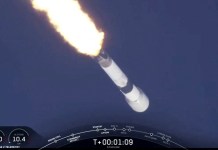OPED By Amb Gurjit Singh
The ASEAN is in the vortex of renewed maritime activity. After being the victim of Chinese aggressiveness in the South China Sea, it is now the subject of interest by friendly navies in the region.
INS Vikrant: Indian Techie Steals A Navy Fighter Jet, Perfectly Ditches It In The Bay Of Bengal & The Rest Is History!
While ASEAN remains cautious about AUKUS and is analyzing the Quad approach towards ASEAN, its members are not hesitating to work with non-Chinese partners for maritime exercises.
The 6 June 2023 trilateral coast guard exercises that the Philippines held with Japan and the US, two members of Quad, were unprecedented.
In early June 2023, with heightened tension between China and the US visible at the Shangri La dialogue, ASEAN’s fears about being caught in a big power rivalry were not assuaged.
They prefer an inclusive multinational approach. This cannot be done at the ASEAN level because of differing positions. As the Philippines went along with two Quad partners, Indonesia held its fourth Komodo multilateral naval exercise (MNEK) in the seas around Makassar in the Sulawesi islands.
2500 military personnel from 36 countries joined Indonesia for the Komodo exercise, which first started in 2014. The first MNEK was held in Batam around the Natuna Sea; in 2016 in Padang, and the third in Lombok in 2018. Post-pandemic, this is the first edition.
Twenty-five naval vessels participated, including from Quad countries Australia, India, and the US, from Western partners like Italy, and contradictory partners like China, Russia, and Pakistan. The Komodo exercise was joined by five other ASEAN countries, Malaysia, the Philippines, Singapore, Thailand, and Vietnam.
The largest contingent was naturally from the Indonesian Navy. Its eight ships were joined by three from Russia and two each from Singapore, Malaysia, and China. One ship each was deployed by India, Australia, Italy, the Philippines, Thailand, the US, Vietnam, and Pakistan.
Naval air assets were deployed by the US, Russia, and the Philippines, besides ten aircraft deployed by Indonesia itself.
Cambodia and Brunei joined the exercise without naval assets. That left Laos as the only ASEAN country not to participate since Myanmar was not invited by Indonesia.
From Asia, Bangladesh, Japan, Oman, Papua New Guinea, Qatar, South Korea, Sri Lanka, and the UAE also participated. Countries like Canada, France, the Netherlands, New Zealand, Spain, Turkey, and the UK were among those who evinced interest in the Indo-Pacific.
From Latin America, Brazil, and Chile, Kenya, from Africa, and Fiji from the South Pacific, participated in this largest Komodo exercise ever held.
The MNEK is focused on ‘Military Operations Other Than War’ (MOOTW). These essentially look at using military assets to perform humanitarian assistance and disaster relief, search and rescue, and maritime security.
These mainly deal with non-traditional threats and try not to make China the target of their efforts to avoid antagonizing them. They encourage partners to work inclusively so that the contradictions between China and Russia do not manifest themselves. It is to the credit of Indonesia that at this divided time, they managed to get China, Russia, and Quad countries to participate in the same exercise.
The Komodo exercise seeks to implement the ASEAN disaster management and emergency response since natural disasters periodically strike the region. It differs from the Malabar or RIMPAC, which involve war games and naval exercises, including beach landings.
The Jakarta Post, in an editorial, pointed out that the use of military assets for HADR(Humanitarian Aid and Disaster Relief) may seem ‘overkill.’ Actually, it allows diverse participants to work together to achieve joint action against non-traditional threats.
Thus, not only were China and Russia present along with the US, UK, Australia, and Japan but also with the navies of ASEAN countries whose islands and waters the Chinese have captured in the South China Sea. Indonesia itself continues to have a problem with China on its EEZ around the Natuna Sea.
Alongside this exercise, the Indonesian Navy held the fifth international maritime security symposium focusing on dealing with regional disasters. It worked on coordinated and collective responses in disaster emergencies and how to deal with sustainable development and a blue economy post-pandemic. This shows the clear intent with which Indonesia approaches these efforts.

This year, Indonesia and the US will continue the tradition of hosting the Super Garuda Shield exercise with 20 countries, again a multinational exercise where military tactics, advanced equipment, and inter-operability among friendly forces are pursued.
Thus, while on the one hand, the Indonesians continue to pursue their Komodo and Super Garuda Shield showing an inclusive effort, there is greater flexibility in dealing with other navies.
India, for instance, held its first-ever ASEAN India maritime exercise in May, and thereafter, the ships of the Indian Navy proceeded for joint exercises with individual ASEAN countries and made port visits to several of them.
Similarly, navies that participated in Komodo used the occasion of their visit to the South China Sea to visit other ASEAN countries during their voyage.
ASEAN has held joint maritime exercises with China, Russia, the US, and India over the last four years. For the first time, it will now hold its own ASEAN military exercise, as announced by the commander of the Indonesian military. This announcement is underplayed or shown as a reaction to China.
ASEAN military chiefs recently held a dialogue in Bali and decided that the ASEAN military exercise will be held in the north Natuna Sea off Indonesia. According to Admiral Yudo Margono, this would be in September 2023, focussing upon ASEAN responsibilities, but would not have naval combat exercises. It shows that ASEAN is now ready to pursue its centrality, including through military exercises.
This follows the mid-year ASEAN summit in May under Indonesia’s Chairmanship in Labuan Bajo. It emphasized efforts to reach a code of conduct on the South China Sea with China expeditiously since it has dragged on for two decades.
The foreign minister said that during their Chairmanship, Indonesia would like to host several rounds of negotiations on the COC so that a substantive, effective, and actionable COC can emerge.
However, the Jakarta Globe quoted Indonesia’s Director General for ASEAN at the Indonesian Ministry of Foreign Affairs as saying that ASEAN was not a party to bilateral territorial disputes that some states have with China. There is speculation that the COC would perhaps not resolve the territorial disputes but focus on ‘maritime matters,’ whatever that loosely means.
It is evident that ASEAN is more concerned with Big Power rivalry in its region than with Chinese acquisitions of some of its islands. They want to pursue an inclusive policy where China and Quad are together in their region, as in the East Asia Summit.
Having held exercises with the major regional powers, ASEAN now wants to show that it can also do so among itself under an initiative of Indonesia during their Chairmanship. It is an effort of ASEAN centrality tinged with responsibility. It is not an anti-China effort.
Hence the focus is on HADR (Humanitarian Aid and Disaster Relief) and the like, not on Island protection. Individual ASEAN countries are pulling differently and engaging with Quad members for defense engagement as well as with middle powers.
China is not the preferred partner in the security and defense community of ASEAN, but their exercise avoids the SCS directly to keep Chinese annoyance at bay.
- Gurjit Singh is a former Ambassador to Germany, Indonesia, Ethiopia, ASEAN, and the African Union Chair, CII Task Force on Trilateral Cooperation in Africa, Professor, IIT Indore.
- Contact EurAsian Times at etdesk@eurasiantimes.com
- Follow EurAsian Times on Google News




